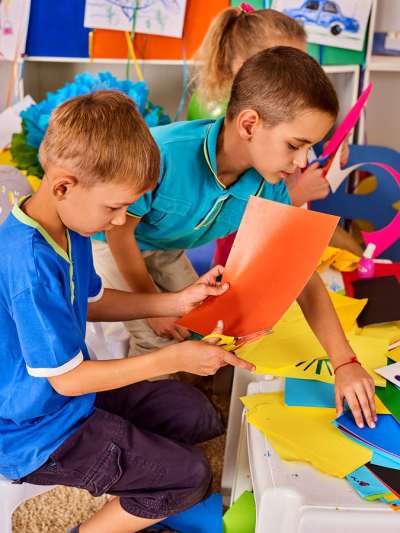Considerations for Social Interaction with Autistic Students
Excerpted from Social Skills for Students with Autism.
Match Social Interaction Programs to Students' Needs and Settings
Just like socially competent students, children and youth with autism differ in a number of ways. Similarly, schools and classrooms have unique characteristics, attitudes, and norms. Accordingly, programs for facilitating social interactions between socially competent students and pupils with autism must accordingly vary with circumstances, situations, and needs.
Educators must consider many options to stimulate interactions between these groups. For instance, peer tutoring may be more appropriate in some settings and with certain students than others. Similarly, some students will be more responsive to antecedent prompting than others. Selecting social interaction procedures based on individual subject, setting, and other salient variables increases the likelihood of successful outcomes.
Establish Reasonable Social Interaction Expectations
Social interaction programs are designed to enhance relationships between children and youth with autism and their socially competent classmates. Increased social interaction enhances acceptance of persons with disabilities, facilitates their social skill development, and promotes positive community attitudes toward disabilities. It is unrealistic, however, to think that social interaction programs will lead to intimate friendships between regular class students and their peers with autism.
Such relationships are based on mutual interests, compatibility, and other factors rarely present in associations between students with autism and their socially competent peers. This reality is not intended to take away from the significance of interactions between students with and without disabilities, the importance of general education students' being accepting and responsive to their peers with autism, or the necessity for children and youth with autism to make appropriate initiations and responses with others. Rather, it is intended to be a reminder that social interaction goals must be commensurate with the relationships that may ensue.
Be Sensitive to Local Social Interaction Norms and Conditions
Educators must establish social interaction programs, contingencies, expectations, and procedures that coincide with individual setting characteristics. That is, instructional methods are most effective when they allow students to interact in regularly occurring activities in accordance with established local norms. For instance, teaching a student with autism to talk to his or her socially competent peers during activities when students ordinarily do not talk may be counterproductive to the goal of encouraging social interactions.
Program for Interaction Quality As Well As Quantity
Researchers have documented clearly the necessity of attending to the quality of social initiations and responses as well as quantity. Teachers and others who organize social interaction programs must recognize that the frequency or duration with which a child with autism interacts with socially competent peers may not be nearly as important as the level at which the interaction occurs. That is, a rehearsed, stilted conversational response of 15 words may not be as meaningful as a 5-word spontaneously generated statement. Accordingly, instructional methods and evaluation techniques must focus on both qualitative and quantitative aspects of social interactions.
















